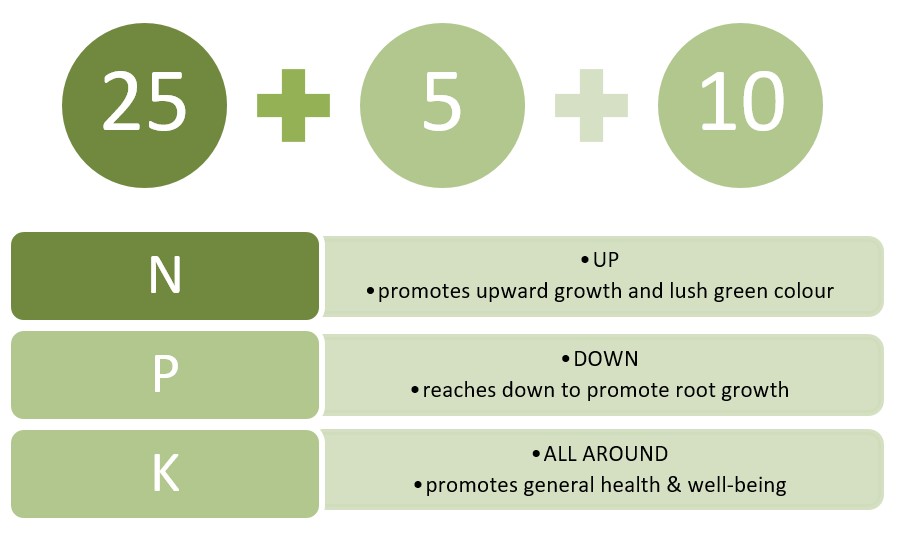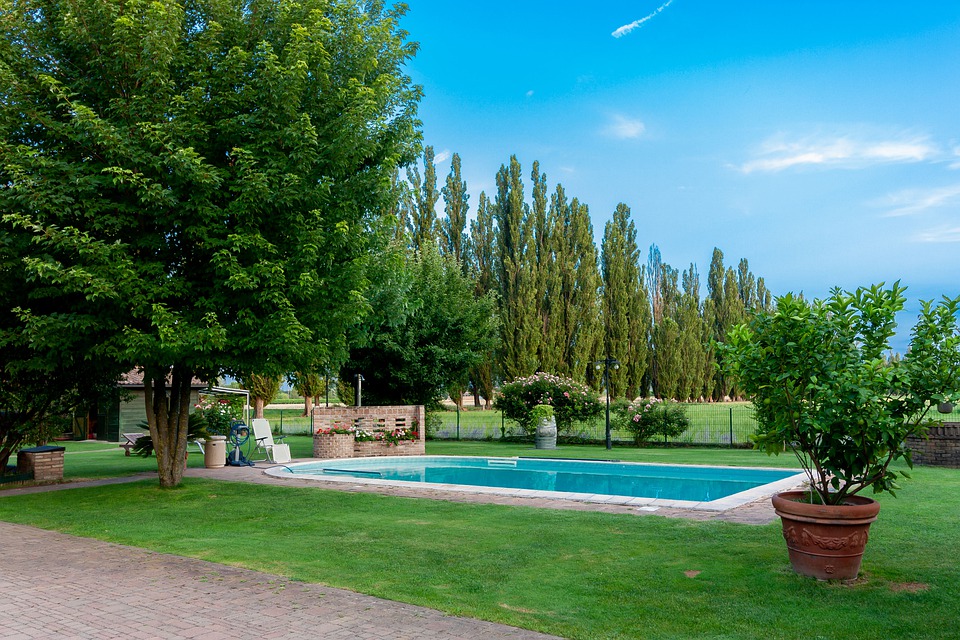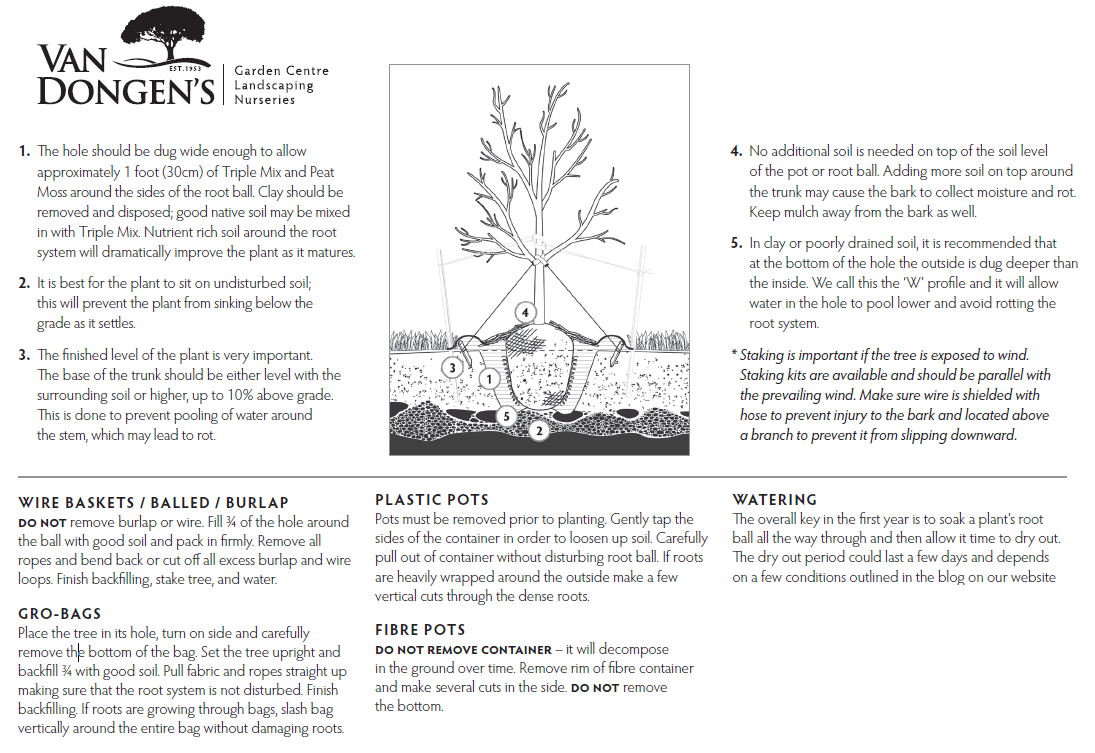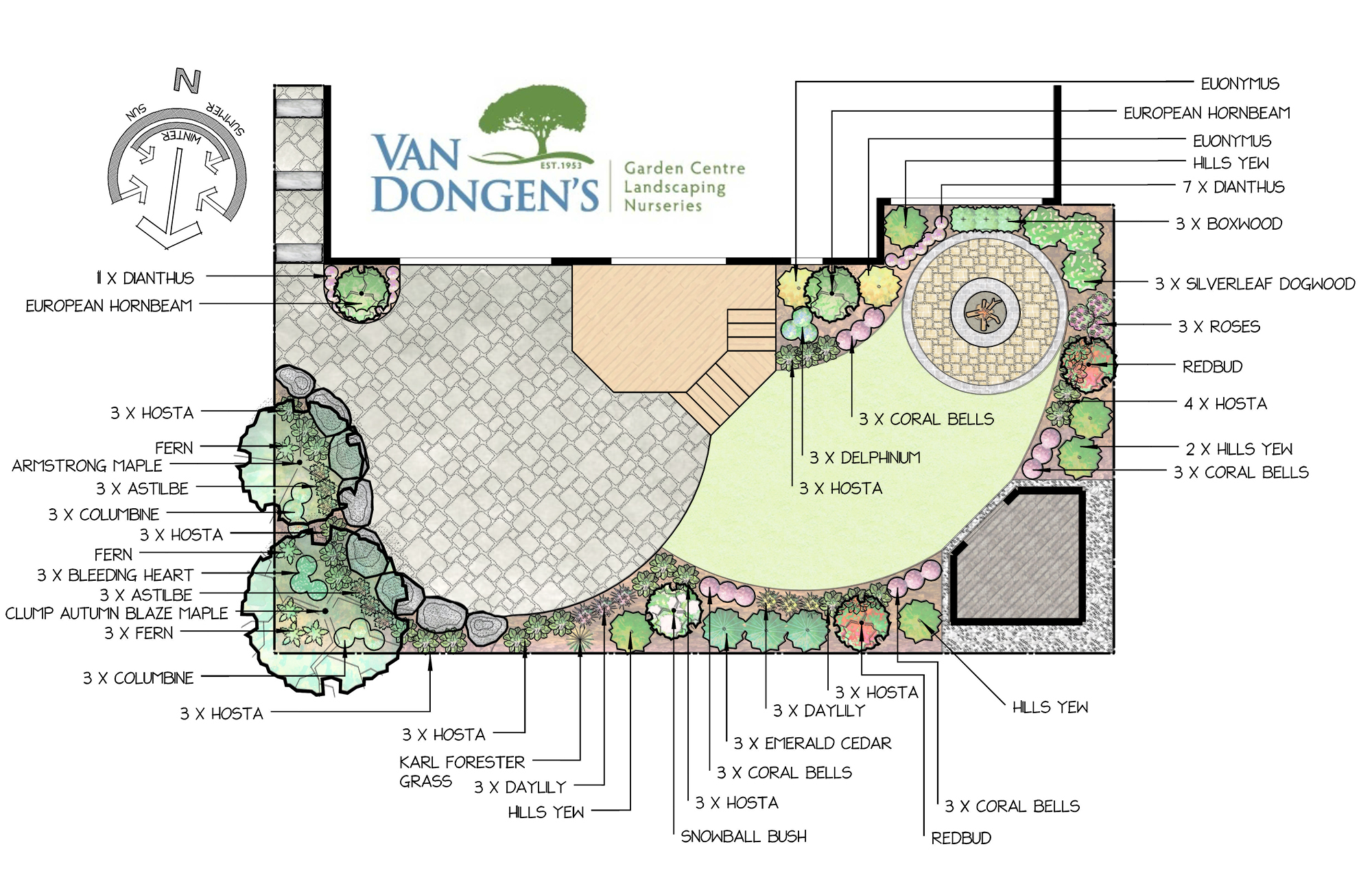Landscaping
-
-
Read more »
A concern that many of our home-owning clients bring to us is how they can achieve and maintain a lush green lawn, especially in the heat of the summer. The fertilizer that we stock here at Van Dongen’s is Agromart ‘Magic Carpet’ Fertilizer. We usually recommend the 25-5-10 formulation. What do these numbers mean, exactly?

Product
Magic Carpet is a strong slow-release fertilizer. It is not diluted, but it is a slow-release nature prevents it from burning your lawn. The strong commercial grade wax coating (XCU= 65%) on the granules allows it to break down slowly over time, usually taking 6-8 weeks to completely dissolve. This means that you can overseed simultaneously without fear of burning!
Application

If you are overseeding or seeing a new lawn, good soil is very important. We have a specialty soil called Viva Lawn Repair, which is very finely screened. This soil contains peat loam, an important ingredient for germination of new seed.
Magic Carpet fertilizer is commercial grade that should be used every 6-8 weeks, whether you have existing grass or newly placed seed. You will require about 4lbs of Magic Carpet for every 1000 square feet of lawn you hope to fertilize. Our Magic Carpet bags are 2
-
Read more »
Our largest number of inquiries is in regard to the type of cedar to use as a privacy hedge. Many new properties have been/are being developed on smaller lots thus requiring options to provide privacy while taking up as little yard space as possible. Cedars are a versatile plant that is both attractive and functional and requires relatively little maintenance. They do well in full sun to partial shade and have a shallow, fibrous root system that makes them the ideal tree for planting around a pool or any other location with underground obstacles. The roots tend to go around objects, such as fence posts, rather than disturbing them.

There is the common misconception that cedars attract mosquitoes. Cedars tend to grow in moist conditions, just the type of environment mosquitoes thrive in. It is the case of the environment causing the mosquitoes to breed, not the cedars. The key to eliminating mosquitoes is to remove standing water from a property if possible. Low areas with improper drainage and rain barrels are two of the most common breeding zones.
There are four options available that will provide the desired result and all share the same basic requirements in terms of habitat. Average to moist soil conditions is preferred and the tree shouldn’t be allowed to dry out. No specific pH or soil type is necessary and cedars are mostly t
-
Read more »
One of the most frequently asked questions we receive is “what is the best tree for my property?”. This requires a detailed discussion about potential long term considerations as the tree matures. This is a complicated question with many variables to consider.

Property Location
Location of the property is the first variable to be looked at because it determines the hardiness zone. Hardiness zone tells us where specific types of plant material that will survive. This takes into account factors such as minimum winter temperature, length of frost free period, summer rainfall, maximum temperature, snow cover and maximum wind speed. For reference Milton is in Zone 6a. Other communities that share this rating are Cambridge and Carlisle. Lakeshore communities tend to be warmer therefore, having a higher rating of 6b and up. This includes Oakville, Mississauga, Burlington and Hamilton. Toronto is warmer still having a rating of 7a. Communities away from the lake tend to be cooler; Georgetown and Guelph have a rating of 5b.
The Role of the Tree
The next consideration is “what do you want the tree to do?”. For purposes of analysis this is generally broken down into the following three concerns:
- Privacy
This is probably the number one con
-
Read more »
Landscaping around swimming pools has a unique set of challenges due to the specific set of requirements associated with a pool. Swimming pools often create their own microclimates such as raised humidity levels and intense sunlight reflected from concrete paving. Plant material can be splashed with chlorine, salt water and other chemicals. The key is to understand the micro climate and find the plant material that can withstand it while looking good and being easy to maintain.

Selecting the appropriate plant material can be broken down using the following factors:
- Privacy:
This tends to be the primary issue for many clients as pool areas are often viewed as sanctuaries, places where someone can escape from the outside world. It may be desirable to block a neighbor’s view, limit noise or hide an ugly view adjacent to the property. The two primary elements to achieve this are trees and hedges. A properly placed tree can block an intrusive deck or upper window. Hot tubs are often incorporated as poolside elements and see use throughout the winter months, thus requiring evergreen screening. Cedar hedges provide a natural fence to enclose the planted space and can provide shade as well as privacy. Emerald Cedars are a popular choice.
-
Read more »
Common Name: Lenten Rose, Christmas Rose, Hellebore
Latin Name: Helleborus
Likes: Hellebores will tolerate most soils, but do best in semi-shade. They won’t tolerate drying out in full sun and need a protected location from wind damage.
Fun Fact: The Hellebore's 'flowers' aren’t petals but sepals which are leaves that have grown to look like petals of a flower. Their job is to protect the actual flower, which is at the center the actual petals are those weird hollow things on the outer rim of the flower.
Why we recommend it: Very early bloomer that thrives in the cold temperatures when gardeners are impatient for spring but other flowers are still dormant. Looks great with early spring bulbs
Watch out for: Aphids

Common Name: Columbine
Latin Name: Aquilegia
Likes: Columbine plants aren’t too picky about soil as long it’s well draining and not too dry. While they enjoy full sun in most areas if it’s a hot area they would probably appreciate some mulch to keep their roots cool.
Fun Fact: its Latin name comes from ‘Aquila’ which means eagle, as the petals resemble an eagle’s claw. The common name is Columbine, whic
-
Read more »
This small backyard design incorporates useable space with a modern feel. A flagstone pathway leads from the side gate towards an interlock patio and a small gazebo. A mix of smaller trees fills the space vertically while shrubs and perennials fill the lower areas with different colours, textures, and bloom times. This design was developed to satisfy the client’s desires for many features while maximizing the amount of space in the yard. Simple displays of reliable, colourful shrubs and perennials give the rear fence a modern feel, as a the garden bed closer to the home features some of the client’s favourite plants. Here, a yard of approximately 60’ x 30’ is split into sections for a large entertainment area, turf for play-space, and a private enclave for evening enjoyment. This design plays off of some existing elements in other nearby yards and offers strategically placed deciduous and evergreen trees to create a more private environment. Some features include an interlock pathway with Armourstone steps, an interlock patio with an Armourstone wall for a garden edge border, and a colourful mix of shrubs, perennials, and small trees. Trees in this design were chosen for space requirements, visual screening for privacy, and an interesting mix of fall colour display.




